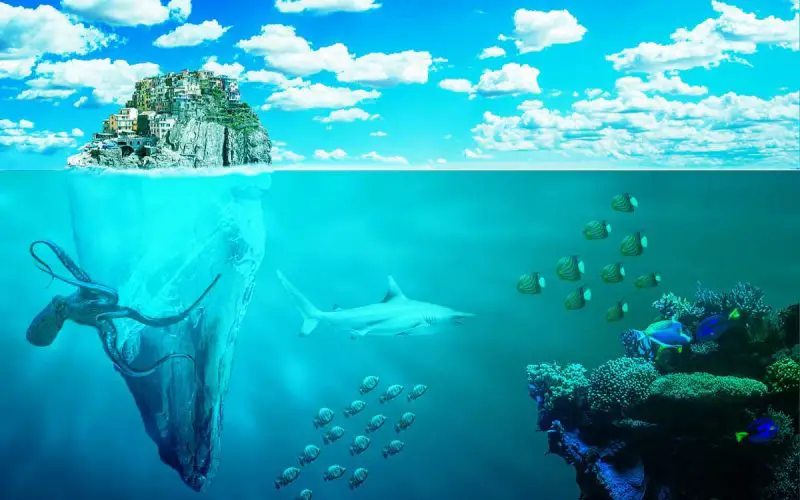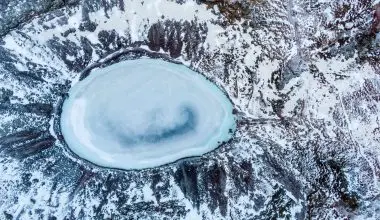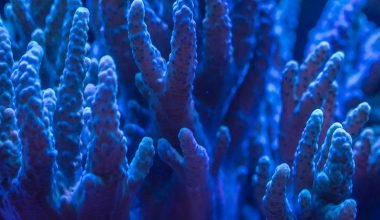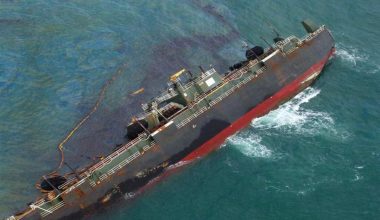Table of Contents Show
What is an ecosystem?
Ecosystem Definition: It is an inter-connected, complex system of living and non-living things that work in union. An ecosystem consists of two parts: abiotic (soil, water, air) and biotic component (flora and fauna).
The key components of a healthy ecosystem are water and its temperature, flora (plants), fauna (animals), sunlight and soil – all working in unity.
If any of these components or key parts loses balance in relation to each other, the whole ecosystem is vulnerable to collapse. This is why balance and consistency is a sensitive, yet an imperative, factor in any ecosystem.
There are a lot of living organisms that make up the ecosystem, consisting of consumers, producers, and decomposers. They all play an equal part in maintaining balance.
Green plants are important living organisms that are categorized under the producers. They are also called categorized under autotrophic organisms as they produce their own food resources.
Consumers include animals such as fish that get energy from producers. The third category of the living organism is the decomposers. They break down deceased animals and plants into organic matter that is absorbed into the soil.
Ecosystems don’t need a specific size to be called one. They could be as small as a flowerbed in your local park or as big as the planet earth itself!
The healthier the natural ecosystem, the less likely it is to be impacted by human intrusion, natural disasters and climate change. The alternate is a grim view indeed!
What is an Artificial Ecosystem?
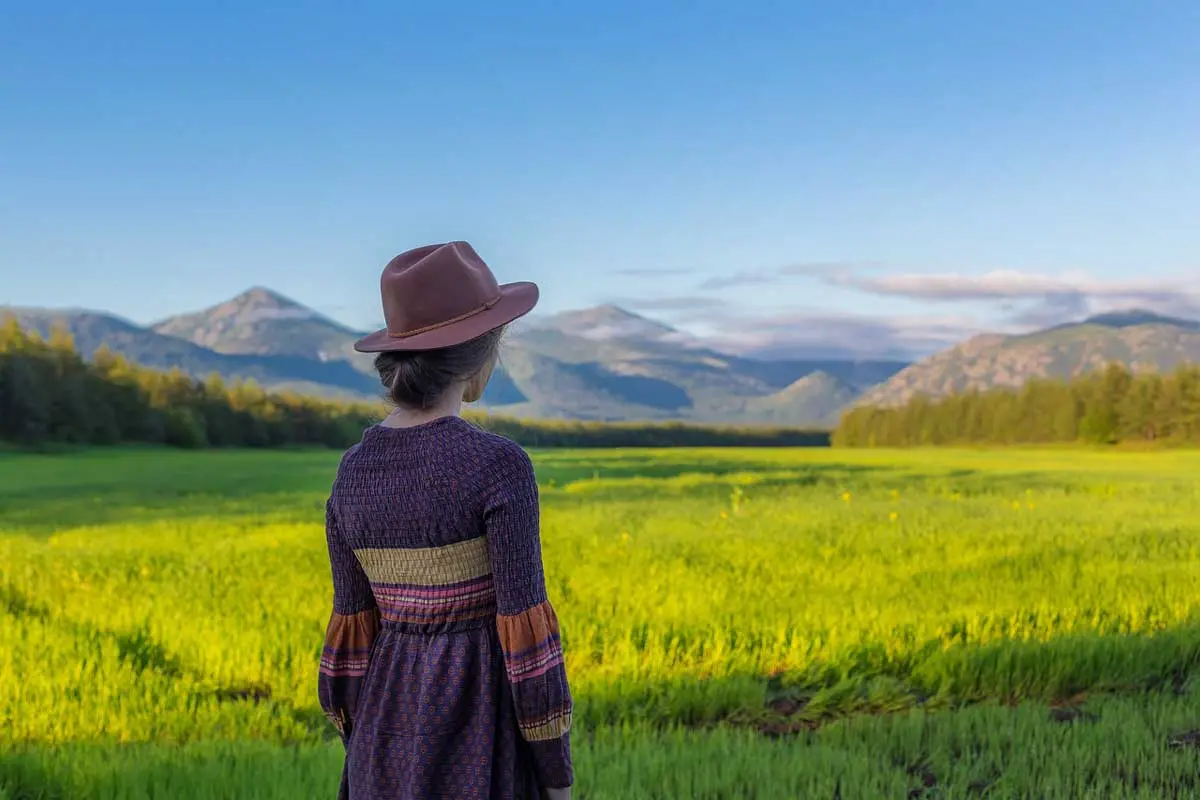
While we’re discussing natural ecosystems, you might also hear about artificial ecosystems.
An Artificial Ecosystem needs help from humans (in one way or other) for its survival. An agricultural farm would be a great example of an artificial ecosystem! It contains plants and animals that are away from their native habitat, and need help from the farmer to survive. Other examples include aquariums, dams, gardens and the ‘living wall’.
Anyways, there are many differences between natural and artificial ecosystems so I made a table!
Differences between Natural and Artificial Ecosystem [Table]
| Natural Ecosystems | Artificial Ecosystems |
|---|---|
| Many plant and animal species – High Diversity | Low species diversity |
| High genetic diversity (big gene pool) | Low genetic diversity (small gene pool) |
| Sunlight is the main and only energy source | Sunlight is the main energy source; (others include artificial fertilizer and nutrients given externally) |
| Food chains, long and complex, forming food webs. | Food chains simple and incomplete. Other trophic members removed as weeds or pests. |
| Ecological succession and evolution occurs | No ecological succession or evolution |
| Natural nutrient cycle | Incomplete nutrient cycle (Harvested in middle) |
| Naturally sustainable | Unsustainable |
Components of an Ecosystem
These components are essential for adequate ecosystem functioning. Studying these components (biotic and abiotic factors) and their interactions is known as ecosystem ecology.
1. Soil

Soil is an important aspect of an ecosystem. It provides vital nutrients for the plants and anchors the plants to keep them in place. The soil absorbs and holds water for plants and animals to use. The soil also acts as a habitat for tons of living organisms.
The soil component allows earth’s ecosystems to provide provisioning ecosystem service that provides us with food and water.
2. Air
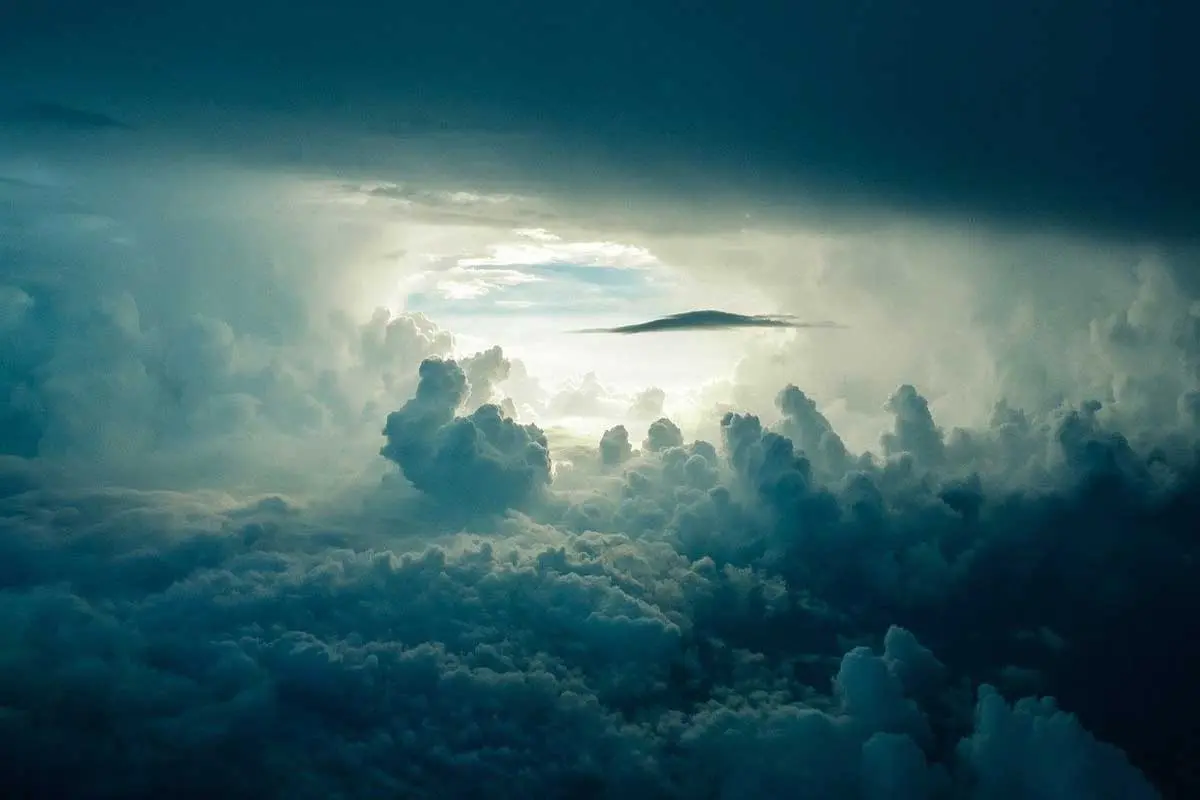
The air (atmosphere) is responsible for providing oxygen and carbon dioxide for the plants and animals in an ecosystem and is necessary for any living thing or living component. The atmosphere also forms a major part of the water cycle.
Devoid of the processes and elements in the atmosphere, there would be no life to begin with!
3. Sun
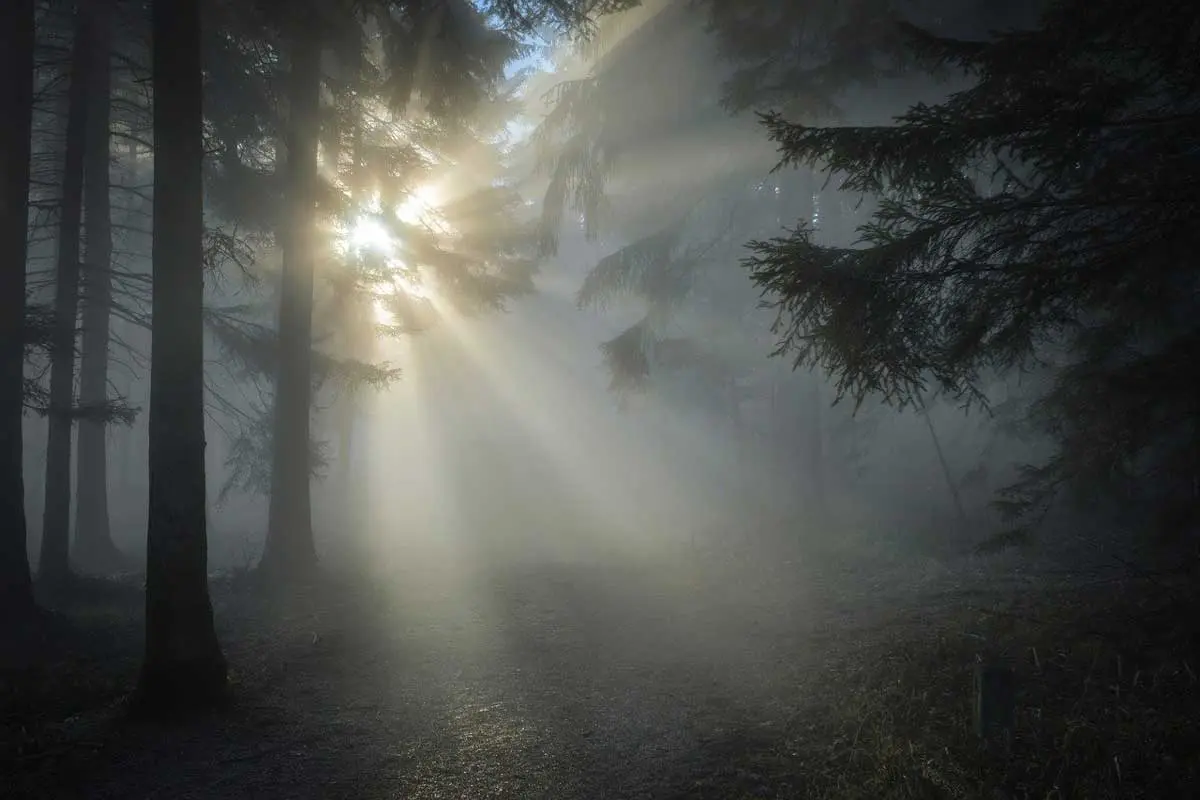
The warmth and light rays from the sun are essential parts of an ecosystem.
The sun’s heat causes the water to evaporate and go back to the atmosphere where it condenses and cycles back into water. In a sentence, that’s the water cycle which the sun helps continue.
The heat also provides plants and animals with warmth. Without the sun’s warmth, the Earth would be too cold for any of us to survive.
The light from the sun is required for photosynthesis, so that green plants have adequate energy to produce food.
4. Water
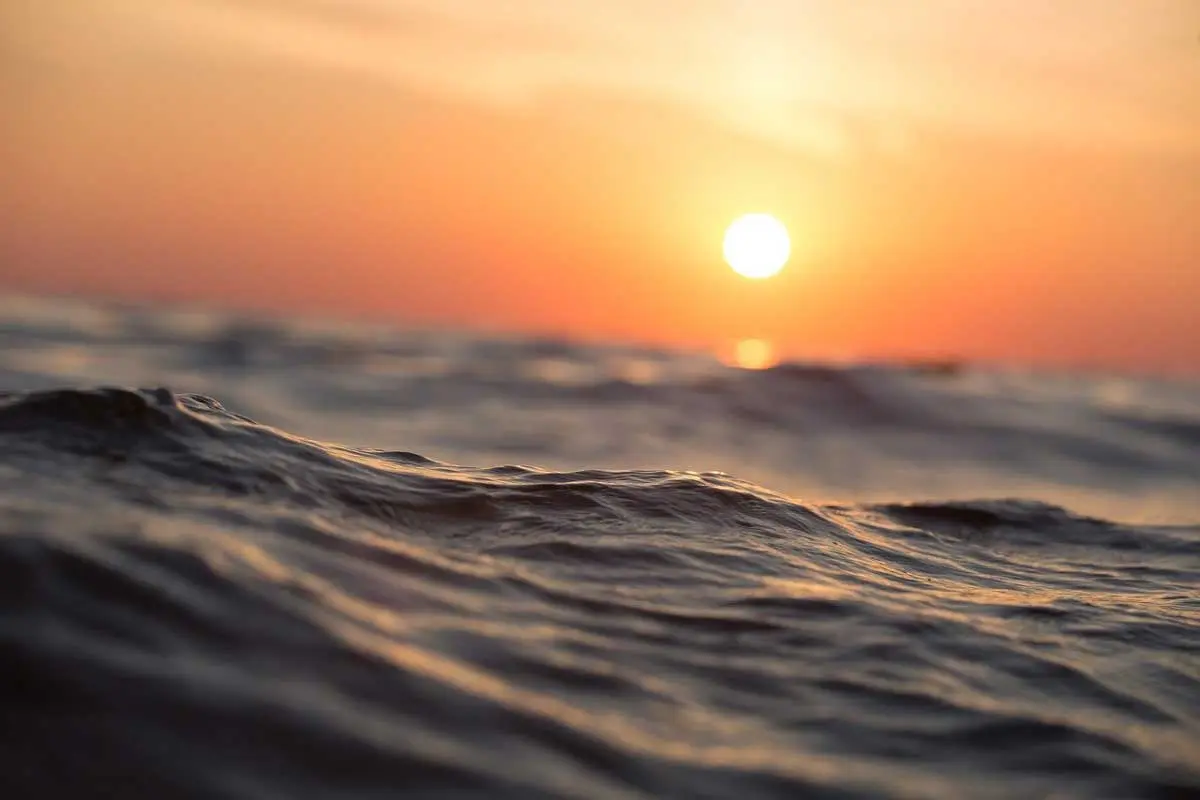
Simply put, “No water no life!” Water forms a big proportion of cells that are building blocks of all living organisms. Water is also used by plants to absorb, transmit and distribute the nutrients they need to live.
Water is the most important of each abiotic factor that helps ecosystem function properly.
Wonder what happens when similar ecosystems exist around the globe because of similar climates?
This phenomenon is known as ‘biomes’.
What are Biomes?
Biomes are similar areas worldwide, including ecosystems, as concentrated groupings of plants, animals, soil bacteria and climatic settings.
They have certain shared dynamics e.g. plant arrangements (trees, vegetation, and grasses), leaf varieties, plant spacing (forestry, prairie) and typical weather.
The basic categories of biomes are: land, freshwater and marine biomes.
Types of Ecosystems and Biome Examples
Terrestrial Ecosystems – Worldwide Land-Based Habitats
At roughly 57,268,900 square miles, the terrestrial ecosystem makes up just 29% of the globe. Since these habitats are diverse, terrestrial ecosystems are further broken down into six categories.
1. Deciduous Forest Ecosystem
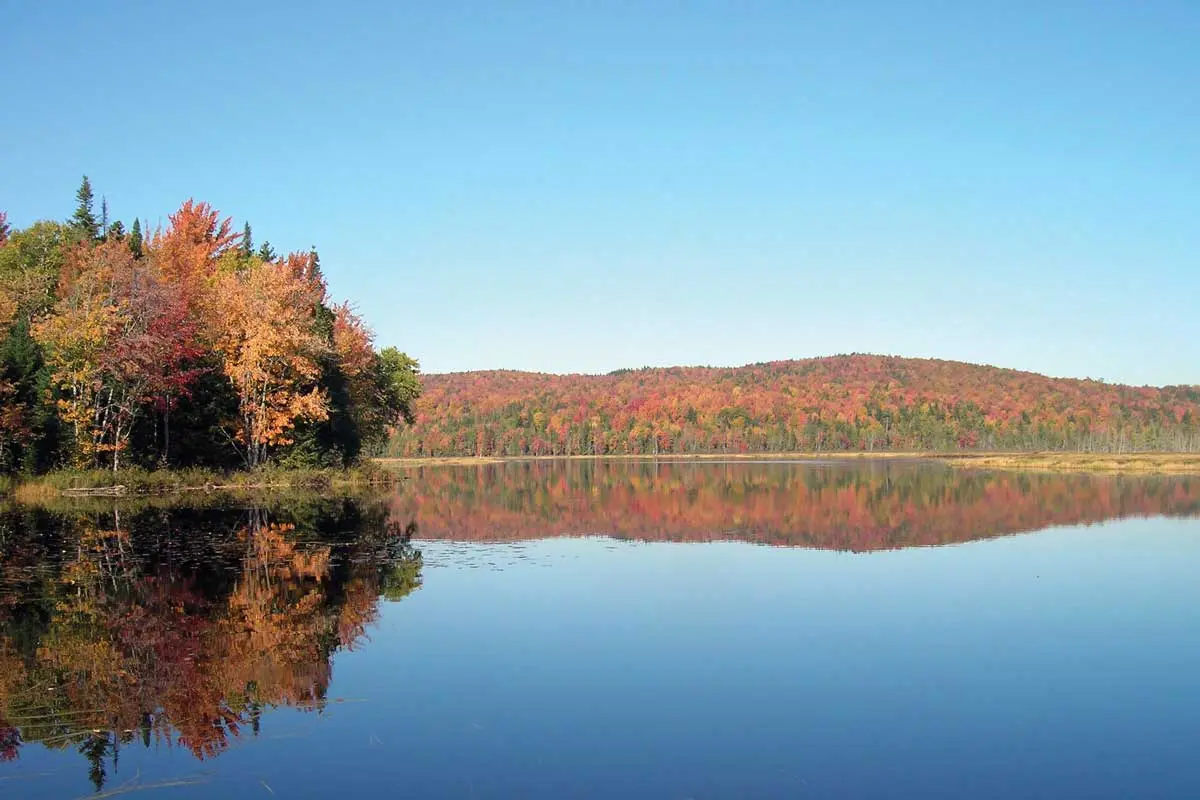
The temperate deciduous forest ecosystem is located in mild regions and undergoes temperature and rainfall variations according to typical four seasons.
Existing conservation goals are to bring back apex predators after the killing practices in earlier centuries, and creating an environment packed with mature trees (afforestation) to redeem for unfettered deforestation throughout history.
2. Desert Ecosystem
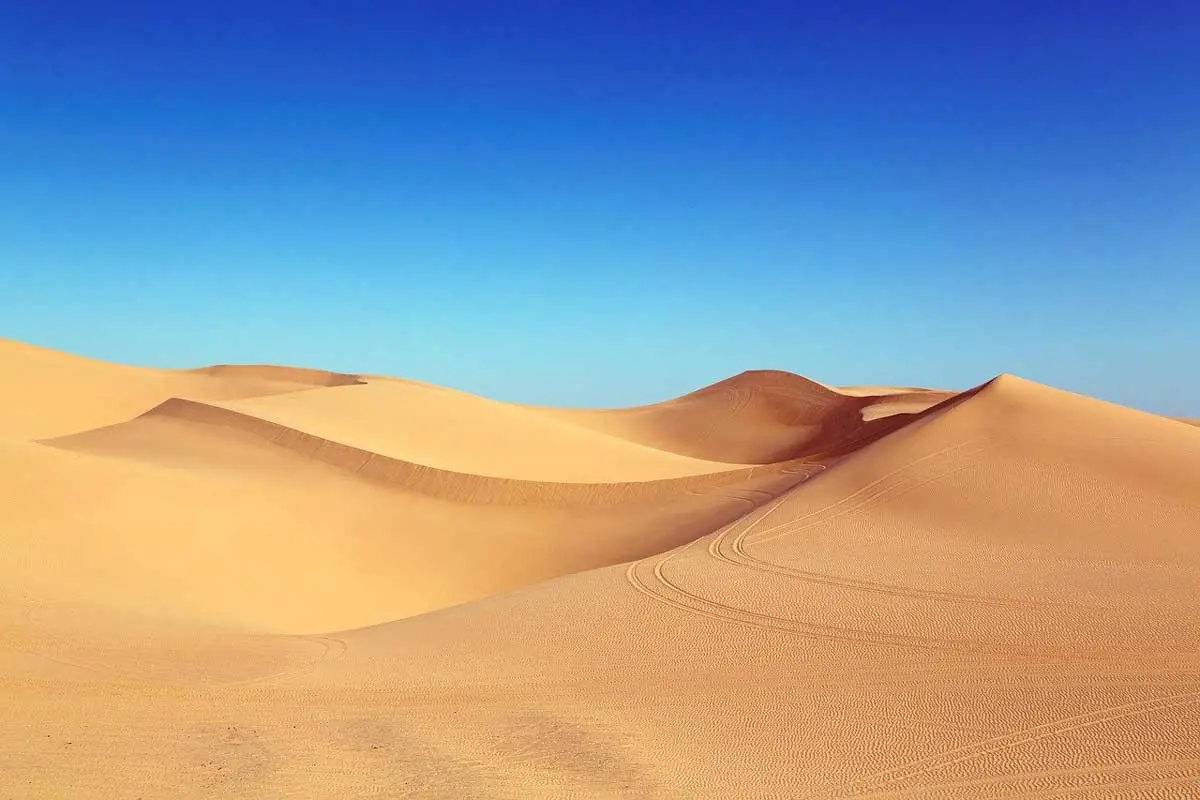
Desert ecosystems can be scorching and dry, semi-arid, coastal or cold.
The aspect that connects these is a dearth of water and the lack of a soil layer (topsoil) in which better vegetation like shrubs and trees can flourish. This doesn’t mean that native desert flora is not valuable.
While native life has adjusted to the deficiency of water, a desert is still incapable to provide for the populations of a wetter habitat. Larger-sized herbivores are not able to last in a desert environment in big numbers, and this in turn limits the numbers of bigger omnivores and carnivores.
3. Grassland Ecosystem

Grasslands are also identified as pampas, prairies, savanna or steppe. They can be tropical or moderate, and are a linkage (midway) between desert and forest ecosystems.
They hardly get sufficient rain to support trees, but have adequate soil nutrients to feed big, grassy areas. This provides substantial energy for a primary consumer.
With a big population of producers, a grassland ecosystem can likewise support huge masses of herbivores, which nourish trophic levels higher up in the food chain hierarchy.
4. Taiga Ecosystem
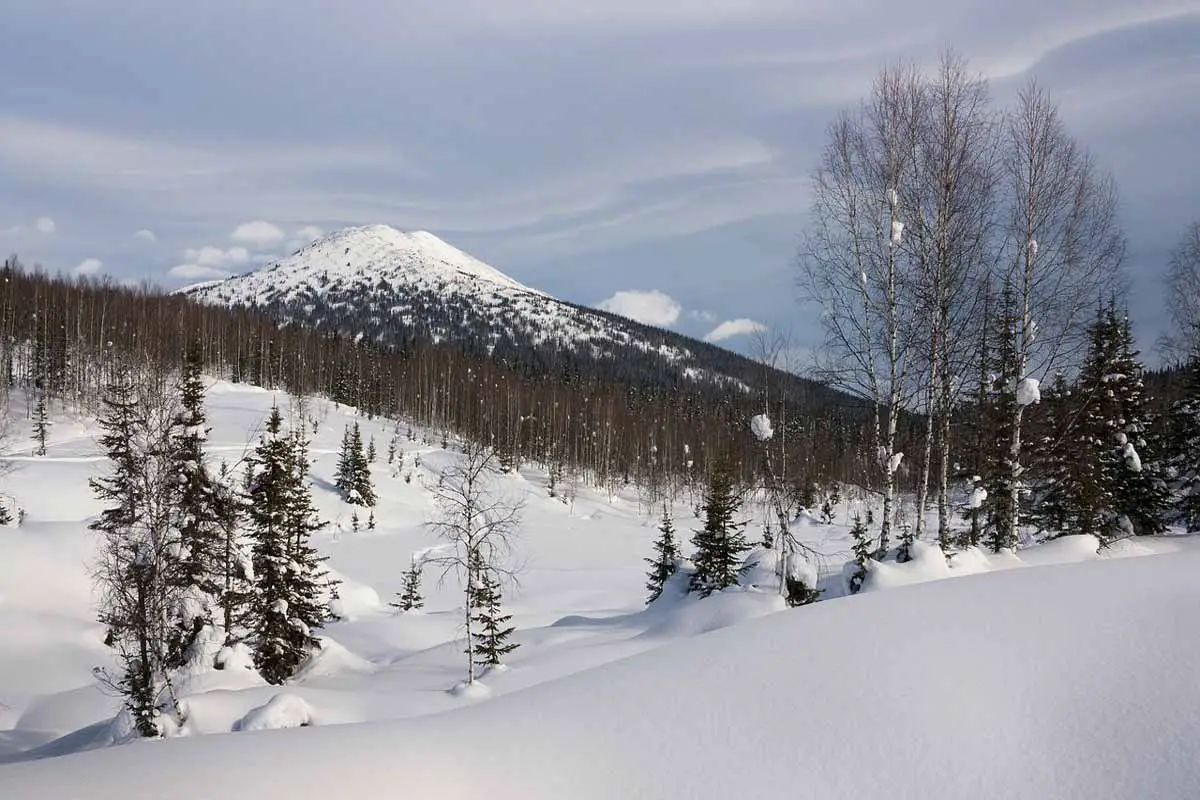
The taiga is an expanse of subarctic woodland south of the Arctic Circle. It has levels of permafrost or rock under shallow soil, which make the soil muddy. The taiga maintains large quantities of conifers – slow budding, cold-resistant trees.
Further plant life is rare and includes lichen, small shrubs and marshland plants.
5. Tropical Rainforest Ecosystem
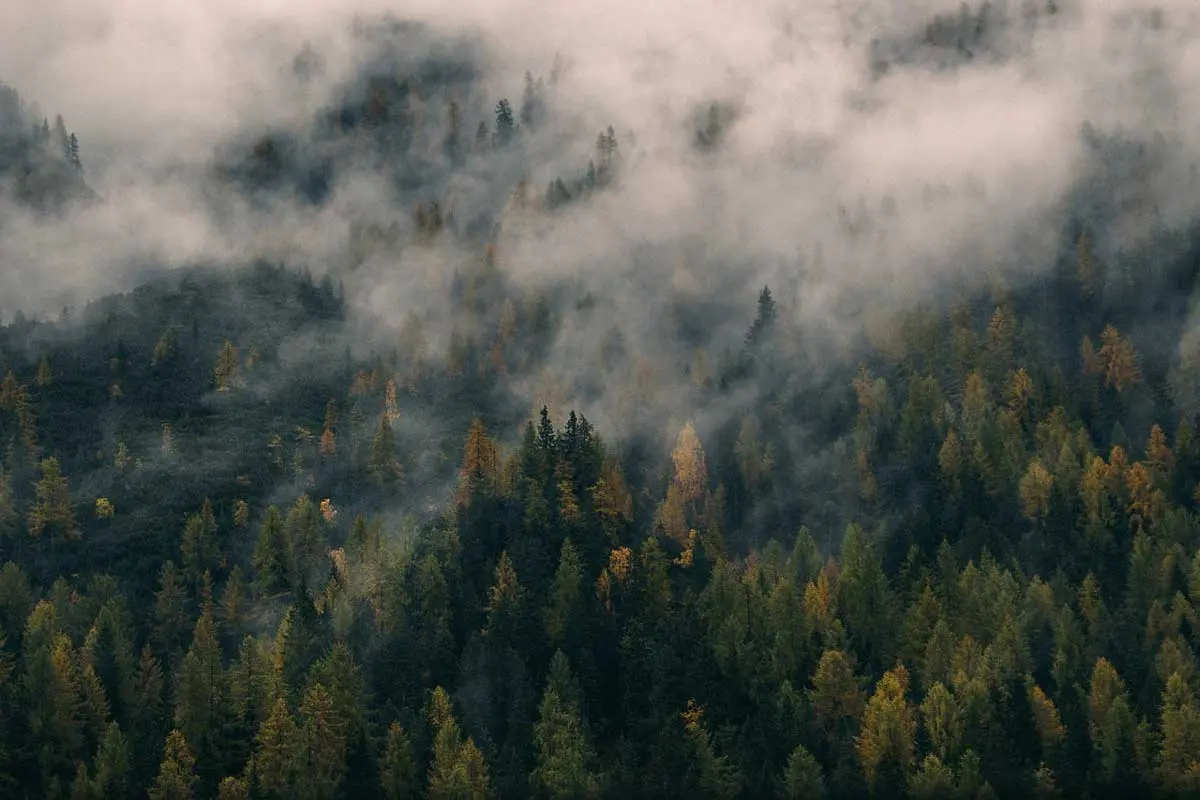
Tropical rainforests are perhaps the most cited ecosystems in the arena of environmental conservation.
Situated along the Equator, continuous precipitation and balminess both, with an absence of seasons deliver a stable climate. Yet, cloud and tree shade makes the rainforest floor a dim place.
Soil is seeped with nutrients through continual rainfall. Plant life has adjusted and is plentiful, making the tropical rainforest bionetwork the terrestrial ecosystem with the utmost biodiversity.
6. Tundra Ecosystem
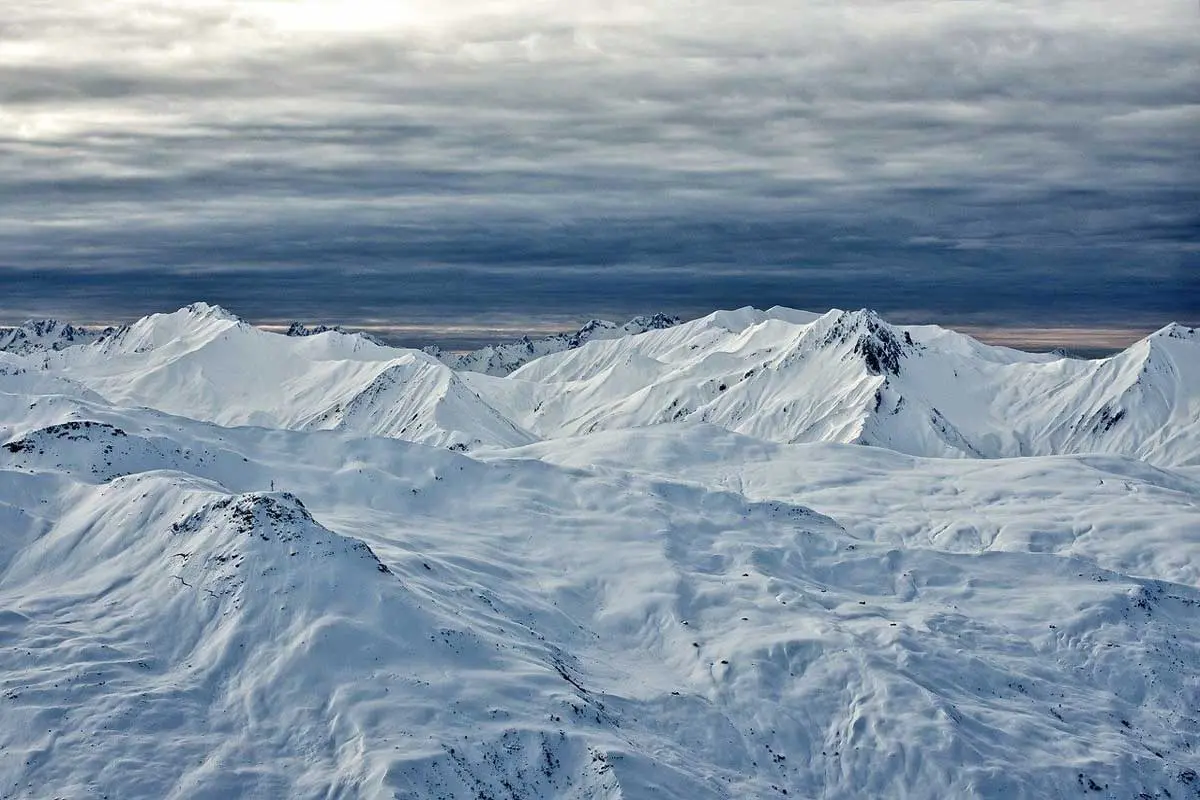
Tundra is the treeless setting of the Arctic Circle.
Climate change is swiftly altering ecosystems in the tundra, as hotter temperature brings external predators in, where they fight for limited prey numbers. This external factor disrupts the whole ecosystem.
Some shrubs have started to grow as the Artic permafrost layer starts to melt. These shrubs compete with lichen – the main food source for caribou (reindeer).
Marine Ecosystems – Biodiversity in Oceans, Seas and Glaciers
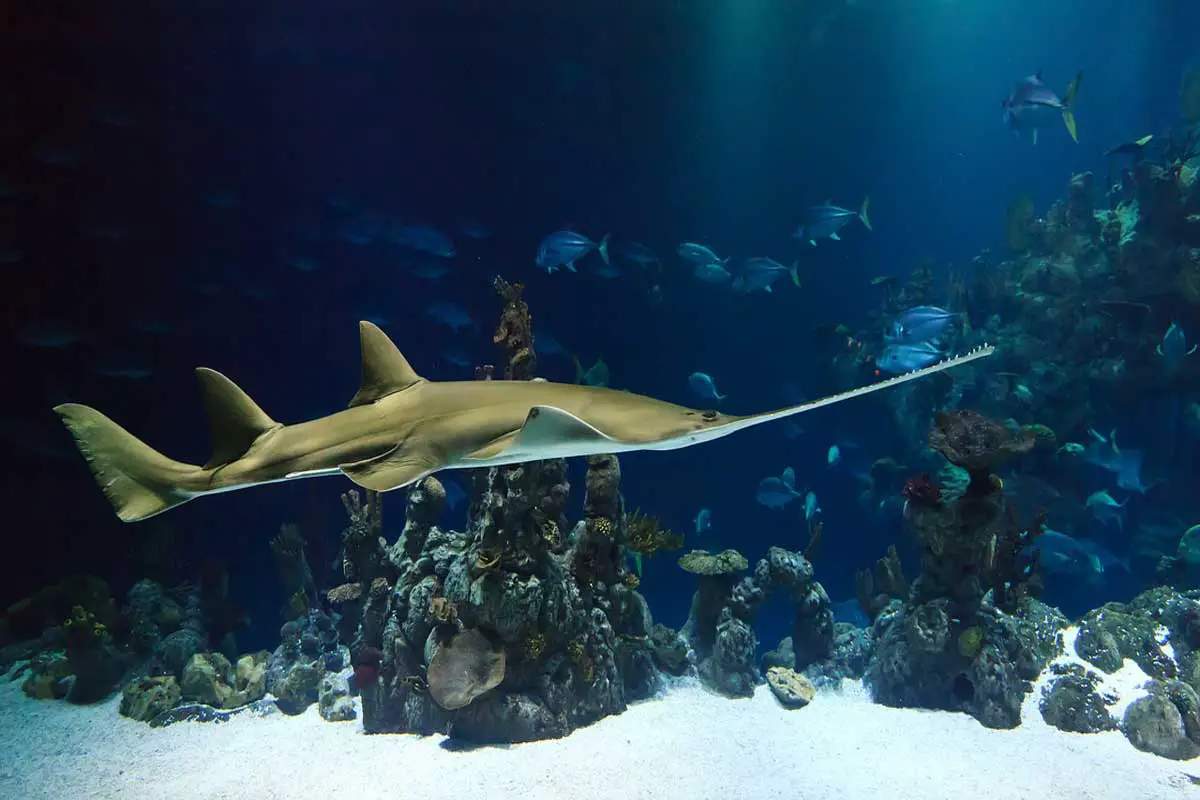
Marine and ocean ecosystem makes up 139,668,500 square miles of the planet; 97% of this is saline water, making marine ecosystems the biggest biome type.
Large marine ecosystems (LMEs) are mostly tough to discern and regulate, as diverse salt water territories have intricate chemical arrangements that differ from coast to coast and from shallow to deep.
This includes marine ecosystems from the bottom of the deepest oceans to the top of partly terrestrial, tidal swamps.
These compositions are always changing because of waves and currents. Contaminants and organisms travel on courses which, though anticipated, are constantly in motion.
The sheer amount of water a big marine ecosystem covers is massive.
Oceanic or marine ecosystems are assembled into ocean floor, estuary with surrounding wetland, coral reef and open marine mangrove systems.
Aquatic Ecosystems – Freshwater Locations: Lakes, rivers and ponds
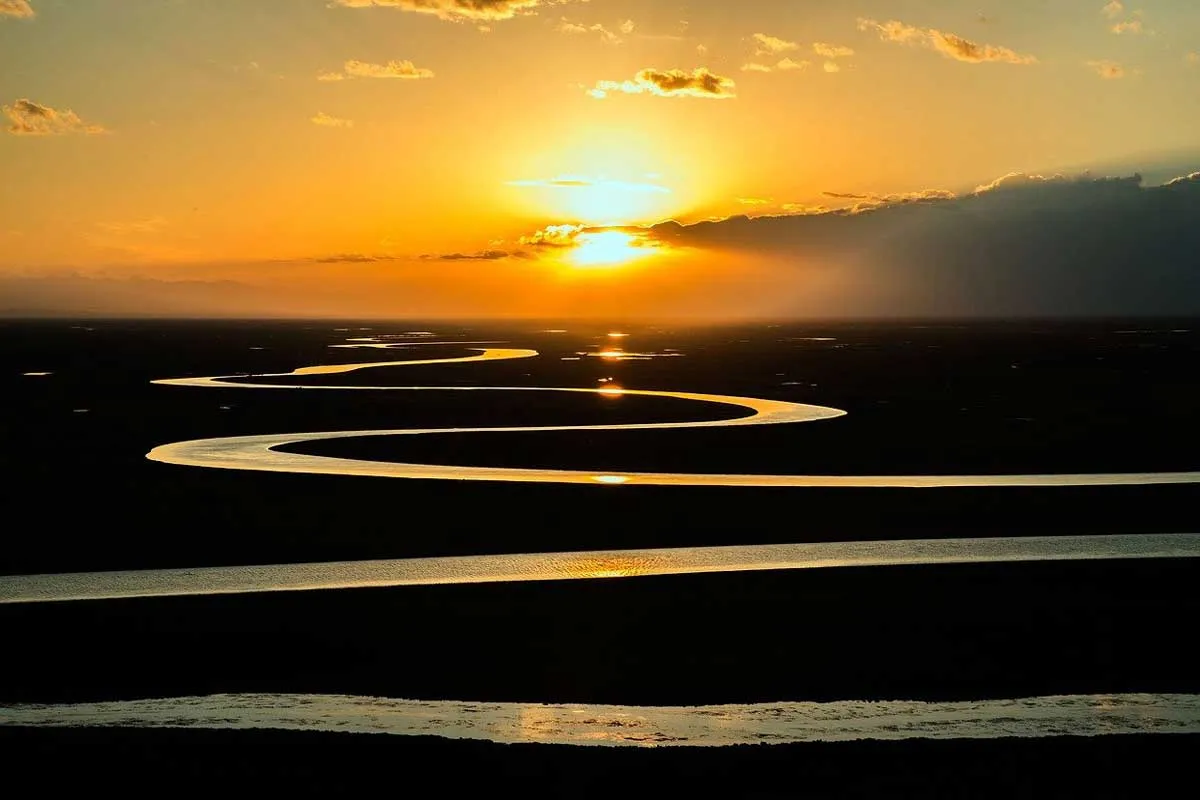
Freshwater ecosystems make up roughly 3% of the Earth’s surface.
Aquatic ecosystem further comprises of estuaries before freshwater encounters salt, marshlands, pond ecosystem (natural or artificial), lakes and rivers.
Since fresh water is crucial for all life, aquatic biomes are really important. Still they are very minor in contrast to other habitats, and have been used as dumping grounds for a long time.
National Geographic states that freshwater species are 4-6x more in jeopardy of vanishing than terrestrial or marine species. Freshwater ecosystem and coastal marine systems are also at high risk of eutrophication, a natural occurrence which pushes plants to grow.
Eutrophication is begun by amplified amounts of sediments which in turn surge levels of nutrients and boost excessive plant growth. As vegetation dies after exhausting nutrients (becoming victims of their own success); their decay results in hypoxic or “dead” zones.
FAQs about Ecosystems
How does Energy Flow through Ecosystems?
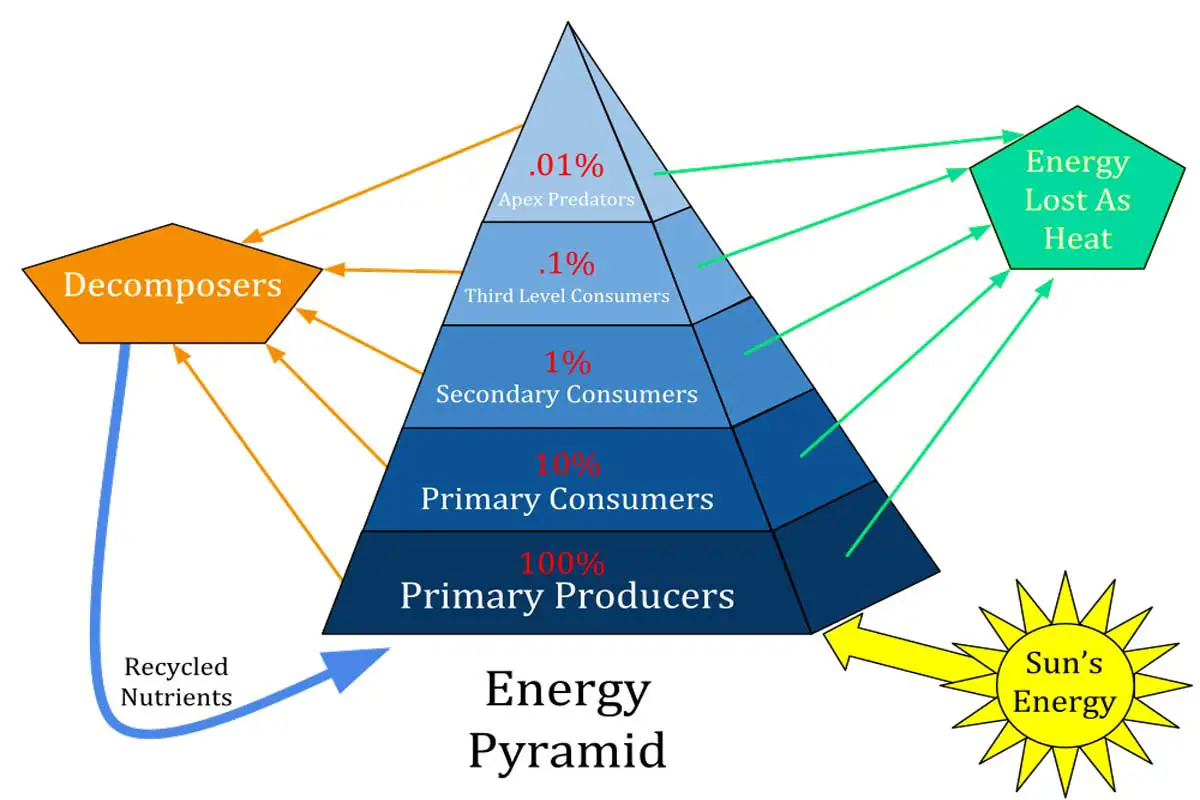
Understanding trophic levels of the ecosystem’s food chain (or food web) are best ways to know how energy flows through an entire ecosystem. When you look at the trophic level pyramid of ecosystems, the base is formed by producers that make use of photosynthesis to feed themselves.
Producers, as green plants, have a pigment (chlorophyll) which converts solar energy from the sun into chemical energy inside plants.
Primary consumers, Herbivores, constitute the second trophic level of the pyramid and feed on the producers (plants). Secondary and Tertiary consumers (omnivores and carnivores) follow in after on higher sections of pyramid. These trophic levels together form a stable ecosystem structure.
As we go higher up the food chain, only 10% of the energy passes onto the higher trophic level. 90% of the energy is lost as heat. In a statement, only 10% of the solar energy absorbed by green plants reaches the herbivore.
A decomposer takes part in all trophic levels of the ecosystem. Decomposer’s job is to recycle nutrients (from dead animals and waste) back into the soil as organic material. This is so that those nutrients can be used again by plants to keep the energy flow ongoing.
P.S: Energy only flows through biotic factors of an ecosystem.
Why are ecosystems important?
We’ve been able to control fire, practice agronomy, and build transport automobiles. We’ve constructed factories, dams, solar panels and we’re always discovering new ways of exploring space.
Still, the human race’s desire to acquire, alter and convert natural ecosystems for economic benefit appears never-ending.
For example, when we convert a plain to produce cereal fields, we’re considerably transforming that local ecosystem. At times, we completely alter it from its original foundations.
Human activities have had such a major influence on ecosystems that we are now discussing the “Anthropocene timeline”.
This is a timeline that outlines the substantial effect of human activities on the Earth’s atmospheric, biospheric, geologic and hydrologic structures.
This period in time also studies fluctuations happening due to climate change events, which is largely triggered by human activity. We can observe these changes all over the world.
When trees are cut down in the Amazonian forest, the ecosystem alters as species struggle to survive and the local moisture and climate both change adversely. In addition, constructing a dam similarly modifies the supply of water and affects the species existing along the river’s course.
Case in point of how human activities disturb ecosystems is the US Yellowstone National Park can be used. Here, the U.S. Biological Survey made the decision to remove the gray wolf species from the ecosystem as a predator regulation measure.
The issue was that the lessening of the wolf population (which was a keystone species) impacted the whole ecosystem in the long run, even shifting the course of the local river. This phenomenon is known as a trophic cascade.
The wolf population was later restored in the park, around 70 years later, in an effort to repair the stability of the ecosystem.
Resembling all living beings, people are reliant on natural ecosystem services to stay alive. We require it to get sustenance, the water we drink and to convert raw materials into our daily products. Thus in order to retain our living conditions, it’s highly essential that we preserve natural ecosystem function and its resources.
For example, farming practices that deliver our food rests on the features of a specific ecosystem. Cereals or vegetables cultivate only under a specific physical environment of temperature and moisture. They moreover need particular natural processes, like pollination, to occur.
If we modify these characteristics too strongly, there is a threat that we won’t be able to yield what we produce nowadays, or at least not in the same way.
How do Habitats Help Form Ecosystems?
As mentioned earlier, inside every ecosystem there are habitats of numerous sizes.
A habitat is a dwelling with a population (a collection of living organisms of the similar kind). All the populations living in the same place at the same time interact, forming a community. Such community also intermingles with the non-living world or the abiotic components around it, therefore establishing an ecosystem.
The habitat essentially makes available for the organisms: nourishment, water, temperature, oxygen, natural resources and other properties they need to live and thrive.
The ecosystem science consists of the study of relationships among all living creatures, natural phenomena, ecological niche communities, bio-chemical processes, and human activities.
How do new species change ecosystems?
When a new biotic or abiotic component moves into an ecosystem, they cause a disruption. This can, as a result, lead to loss of different types of species contained by the ecosystem.
Nevertheless, time and again ecosystems can defend themselves from invaders, contingent on the harmfulness of the new element and the perseverance of the original ecosystem.
Organisms have endured in spite of unceasing changes, natural selection and intrusions, but they needed to adapt to new conditions.
Modifications are always slow and ongoing. Some species even fade and new ones make their place. Typically the population remains within bounds of the food supply inside an ecosystem.
Overall, ecosystems are more resilient to rapid or big changes than each species separately. The Arctic tundra in Russia is a sample of an ecosystem which has continued to be comparatively unchanged for a long period of time.
Conclusion
In conclusion, the world we live in, the only we planet our race can survive on has a delicate balance that mustn’t be disturbed and given its due respect and protection.
Healthy ecosystems are key to continuation of life, for all that live in and outside them. The minutest of change in the natural order of things has a domino effect that could change things for the worse. This is why we shouldn’t be complacent!
